First guesses of Starmer's Whitehall
Sifting through commitments, plans, hints, rumours and denials, what can we say about the way that victorious Labour might shape the machinery of government?
Introduction
It is a testament to the the power of superstition, among other factors, that most senior members of the Labour Party will not make any remotely extravagant predictions of their likely success at the impending general election. The party has not been headed in the opinion polls since the last days of 2021, and is consistently seeing a lead over the Conservatives well into double digits sometimes as high as 30 points. If that scale of advantage was repeated evenly across the United Kingdom, it would represent not just a Labour victory of an unprecedented scale, but very possibly an extinction event for the Conservative Party.
On a basic level, Sir Keir Starmer and his top team are playing down expectations because they don’t want potential Labour voters to be complacent, to assume that victory will be theirs and think therefore that their individual vote will make no difference either way. It is also true that on a simple human level we don’t like to see the assumption of success, especially if that success depends, ultimately, on our approval. We like to think we are considered and courted. Complacency can so easily wear a mask of smugness.
For Labour in particular, there are two other factors at work. The first is that they have been out of power for nearly 15 years. Only 50 or so current Labour MPs, around a quarter of their strength, have ever sat on the government benches in the House of Commons, so it is easy to understand that the idea of being in power is seductive beyond words and therefore precious. But Labour is also still haunted by the folk memory of the 1992 general election. Although the polls were not as far from predicting the truth as we have come to recall, it was widely expected that Labour would win. Of 50 polls conducted during the campaign period, 38 indicated that the Labour Party had a narrow but clear lead. The worst case scenario was assumed to be a hung parliament. Yet when the votes were counted, John Major had led the Conservatives to a fourth consecutive victory, attracting more than 14 million votes and being rewarded with a seemingly workable majority of 21. It remains the largest popular endorsement of a government in British history. That reverse, that sense of utter, devastating disappointment, runs in the Labour Party’s veins.
Let us step back for a moment, though. Anything can happen at backgammon, as Alan Clark used to say, but we can agree that it seems, based on the available data, very likely that Labour will form the next government. Let’s take that as at least a working assumption for this essay. Starmer may still be hyper-cautious in public, and although he is effectively an atheist he acknowledges “the power of faith and the way it brings people together” so perhaps invokes that for good luck, but it is clear that he and his advisers have begun thinking about the kind of government they would form if they win the election. At this point—my hunch is that we will go to the polls in Octover or November, so we are about six months out now—it is worth looking at what has been said, suggested, rumoured and indeed denied about the administrative and institutional characteristic of a Starmer ministry and see what kind of picture emerges.
Access talks
As has been customary since 1964, representatives from the Labour Party have now began having access talks with the civil service to prepare for the possibility of government. Our political culture operates on a brutally swift transition from one administration to the next: while the handover period between US presidents lasts more than two months, in this country we vote on Thursday, the result is usually becoming clear by Friday morning and the victor either staying in Downing Street or preparing to move in within hours. In the Labour landslide of 1997, the country went to the polls on 1 May, Tony Blair kissed hands as Elizabeth II’s 10th prime minister on 2 May and appointed the bulk of his cabinet the same day, and the remaining ministerial posts were filled over the weekend.
The pre-election contact between the official opposition and representatives of the civil service are an attempt to smooth that transition. They were first offered and authorised ahead of the 1964 general election: Sir Alec Douglas-Home, that most courteous and generous of premiers, acknowledged that the Conservatives had governed for more than 10 years, and that many potential Labour ministers would lack experience. He was also aware that Harold Wilson, the leader of the opposition, intended major changes to the machinery of government, in particular the removal of long-term economic and industrial planning functions from the Treasury to a new Department of Economic Affairs, and that the likely head of the new department, Labour deputy leader George Brown, had been attempting to engage with the joint permanent secretaries at the Treasury, Sir William Armstrong and Sir Laurence Helsby, to discuss the proposal. Douglas-Home therefore authorised a degree of on-the-books contact between the opposition and the civil service.
These access talks have been maintained ever since. There is a useful primer on the format by the Institute of Government, but we should be careful of overestimating their importance. It helps incoming ministers to have put names to faces and seen senior civil servants in a professional setting, but from the beginning it was understood that there were limits of constitutional propriety. Douglas-Home’s initial permission emphasised that the discussions should be “discreet” and conducted “on a factual advice”. Effectively, this was not ban opportunity for the opposition to receive free policy input from the government of the day. Nevertheless, the fact that Starmer’s shadow ministers are now engaged in these talks indicates that there is systematic planning going on.
Looming large in this process, discreet or not, is Starmer’s chief of staff, Sue Gray. The former civil servant has been the leader of the opposition’s principal aide for nearly seven months now, and it is natural that he will lean heavily on her for advice about Whitehall. She joined the civil service straight from school in 1975, and ended her career as second permanent secretary in the Cabinet Office, responsible for policy on the Union and the constitution. It is sometimes forgotten that she was also permanent secretary of the Department of Finance in the Northern Ireland Executive from 2018 to 2021, and applied without success to be head of the Northern Ireland Civil Service when Sir David Sterling announced his retirement in 2020.
There is something about Gray that has caught the imagination of the public, or at least of the political commentariat. It is true that she is, in Whitehall terms, the most experienced figure to assist an opposition leader, and will be the most senior political occupant of the role of Downing Street chief of staff, assuming she makes the transition, since it was fully established in 1997. She also has a degree of fame for her conducting of the “Partygate” inquiry into lockdown regulations in Downing Street during the pandemic which contributed to the fall of Boris Johnson in 2022. And she possesses a faint air of mystery: her public profile as a civil servant was extremely low, her exact date of birth is not universally recorded, and her “career break” in the 1980s to run a pub in Newry with her husband, country singer Bill Conlon, is often suspected of being a façade for some kind of undercover government activity (this is officially denied).
Downing Street chief of staff
Assuming she does become chief of staff for Sir Keir Starmer in Downing Street, she is likely to be a substantial and influential figure. The position was established in its modern form by and for Jonathan Powell, Tony Blair’s close adviser, placing in explicitly political hands much of the responsibility which had previously been exercised by the prime minister’s principal private secretary, a career civil servant. (There was a chief of staff under Margaret Thatcher from 1979 to 1985 in the person of David Wolfson (later Lord Wolfson of Sunningdale), a successful businessman who had begun advising her shadow cabinet the year before, but he was unpaid and after 1982 undertook the job on a part-time basis.)
The excitement over Gray’s recruitment has slightly obscured the fact that Powell had also been a career civil servant, albeit not as senior as Gray. He was in the Diplomatic Service from 1979 to 1995, latterly as first secretary in the UK Embassy in Washington, from where he was recruited by the then-leader of the opposition, Tony Blair, to be his chief of staff. Powell had previously introduced Blair to President Bill Clinton when the former visited Washington in 1993. Powell’s elder brother Charles, now Lord Powell of Bayswater, also served in the Foreign and Commonwealth Office, and most famously was private secretary for foreign affairs to Thatcher in Downing Street from 1983 to 1990. It was far longer than diplomats conventionally stayed in the position, and he resigned from the FCO a few months after Thatcher’s departure, aged only 50. There was a sense that he had become too close to the former prime minister credibly to return to a nominally impartial civil service role, though he later also said “I think more people should do this: I think our system has become too specialised, too much devoted to vertical careers, where you stay in the same path for the rest of your working life”.
The development of the chief of staff over the past three decades has been patchy. Powell served for all of Blair’s tenure, just over 10 years, so he and the institution were indistinguishable. He was a special adviser rather than a civil servant, and, along with Alastair Campbell as press secretary, was unusually and specifically given executive authority over civil servants, though this was never in the end used. When Gordon Brown became prime minister in 2007, however, he reflected his decade of Whitehall habituation and summoned his former principal private secretary at the Treasury, Tom Scholar, back from a position in the Washington embassy to be chief of staff. But Scholar moved to another Treasury post six months later, and Brown did not appoint a completely equivalent figure for the rest of his time in Downing Street.
Like Blair, David Cameron was only served by one chief of staff. Ed Llewellyn had worked for Chris Patten, as governor of Hong Kong and then European external affairs commissioner, and Paddy Ashdown as High Representative for Bosnia and Herzegovina before he became Cameron’s chief of staff in opposition in 2005. Theresa May initially gave the job jointly to her former Home Office special advisers, Nick Timothy and Fiona Hill, but both were sacked in the wake of the 2017 general election and she turned instead to Gavin Barwell, the housing and planning minister who had just lost his Croydon Central seat.
Boris Johnson more than any other prime minister in recent history needed a highly organised and focused chief of staff to translate his erratic urges into government policy, but instead he chose to fill the role very roughly with veteran Sir Ed Lister, who had worked for him in City Hall, as chief strategic adviser and the unpredicatable and disruptive Dominic Cummings as chief adviser. In 2021, having sacked Cummings, Johnson tried a different tack in the shape of Dan Rosenfield, then a partner at corporate advisers Hakluyt & Company but a Treasury civil servant from 2000 to 2011, including as principal private secretary to chancellors Alistair Darling and George Osborne.
Rosenfield resigned after 13 months and Johnson tried a different approach again. He appointed Steve Barclay, MP for North East Cambridgeshire and chancellor of the Duchy of Lancaster in the Cabinet Office, effectively making the chief of staff a ministerial role. Many observers were sceptical about the advantages of this, but Barclay had little time to prove himself one way or the other, being shuffled to the Department of Health and Social Care after five months.
Liz Truss chose a Whitehall outsider as chief of staff for what proved to be her fleeting premiership. Mark Fullbrook had been a Conservative Party official under Thatcher and Major before becoming a partner at Lynton Crosby’s lobbying consultancy C/T Group, while his wife Lorraine had been Conservative MP for South Ribble 2010-15. Rishi Sunak was less radical, and appointed Liam Booth-Smith, whom he had known as head of the Joint Economic Unit between 10 and 11 Downing Street.
I wrote last year that the job of Downing Street chief of staff has been done badly much more often than it has been done well. Powell was a perfect match, in ter=ms of skill, temperament and relationship with the prime minister, but others have struggled, either because of external circumstances, or shortness of tenure, or a lack of clarity about their precise role. It is odd that there is still such dysfunction in government. In December last year, I analysed the growth of the chief of staff role in business for Spear’s Magazine, and it is now a common part of corporate structures. Somehow, though, the tenor of instability which has plagued politics in recent years seems to have taken its toll on the Downing Street chief of staff.
Gray has divided opinion in the Labour Party. She had a close relationship with Starmer, as she ought, and her supporters argue that her Whitehall experience has already brought practical common sense and a grasp of reality to the leader of the opposition’s office. She has also leavened what was perceived as a male-dominated culture in Starmer’s inner counsels. However, detractors accuse her of lacking political sensitivity as a former civil servant, and sometimes being slowed down by process. That said, it is alleged that Ed Miliband considered tempting her away from the civil service when he became leader of the opposition, though eventually he chose former diplomat and head of public affairs at Lambeth Palace Tim Livesey instead.
Among her former rather than new colleagues, there is also a range of opinion. While Starmer himself repeatedly stresses his modest origins and his father’s work as a toolmaker, with Gray it is other people who keep coming back to the fact that she is not from a typical Establishment background: the child of Irish immigrants, her father a furniture salesman and her mother a barmaid, she grew up in Tottenham and went to a state Catholic school where—as a cousin would tell The Daily Mail—her academic performance was “simply brilliant”. She “was very driven and it was obvious Sue was going to have an amazing career”, he went on. But when her father died suddenly of a heart attack at the age of 47, Gray quickly joined the workforce rather than going to university, joining the civil service from school.
Some who served in Whitehall with her think that her background has made her resentful of privilege, one recalling “quite a chip on her shoulder about Oxbridge generally”. We know almost nothing of what Gray herself thinks, though she was surprisingly candid when interviewed by BBC Northern Ireland’s The View about her failing to become head of the Northern Ireland Civil Service. “I really wanted the job, but had to get over it,” she admitted, but the rationalisation she advanced is perhaps significant:
Why didn’t I get the job? I’m not sure I’ll ever quite know. But I suspect people may have thought that I perhaps was too much of a challenger, or a disrupter. I am both.
What we do know is that she is extremely hard-working, meticulous, scrupulously fair but secretive. But we should not picture her as dour or joyless: of her time running The Cove in Newry, she says she “loved” it. “I think actually it's a very sociable occupation, very hard work. But I loved meeting people”.
What will Starmer expect of Gray? Writing in The Times last summer, Whitehall editor Chris Smyth suggested the Labour leader was “sceptical of the civil service’s ability to deliver his agenda” and that Gray’s priority will be to reform the machinery of government to achieve the goals of his five central “missions” (of which more later). An anonymous Labour Party source stressed that she would examine not only institutional structures but cultural issues and ways of working, or, in other words, “how we will make stuff happen if we win.”
As well as trying to make Starmer’s office more organised and rigorous, she has worked hard on individual relationships with other party grandees. Gray has been an important part of securing the leadership’s relationship with Labour figures in other parts of the country, like Andy Burham, the Greater Manchester mayor. She has been praised for her willingness to listen to others and attempt to find common ground on issues, and this is a key part of the chief of staff’s function, managing an efficient administrative framework and holding a team together.
One major question as yet unanswered is whether Starmer sees her as having a role in policy, or if she will simply be a “systems” person, making sure the Whitehall bureaucracy is at its most responsive and efficient. She has reportedly “asserted herself in the process of political decision-making but she won't go unchallenged”. A shadow minister enthused in The Times:
Sue’s been great because she cuts through all the advisers and gets us all to meet, talk and give our own opinions on policy and strategy. There was so much frustration among us that we would just get slapped with a briefing page on what lines to say on air, decided by less experienced advisers who aren’t MPs.
It is likely that top-level policy will remain in the hands of others, although Starmer’s shadow cabinet lacks experience and heft. When he reshuffled his top team last September, I suggested that the resulting line=up "was “without any dazzling stars”, a judgement by which I largely stand. In government, however, even the most room-temperature cabinet ministers will have their own fiefdoms and their own cadre of officials to support them.
My guess is that her most important contribution to Starmer’s premiership will be a fixer, someone who can see potential pitfalls and try to avoid them or at least mitigate their hazards. She is good at getting to the heart of disagreements, as she engenders trust in people. Perhaps the real sign of her influence will lie in the problems which never get as far as Starmer’s desk but are quietly resolved informally and away from the glare of scrutiny.
The tetrarchy
Everyone accepts that the current cabinet system is not an effective tool for policy-making or helpful monitoring of progress. This is a well-worn trope: Edward Heath came to power in 1970 determined to streamline to heart of government, managing to get the cabinet down to 18 members, and his creation of two large “super-departments”, Trade and Industry and Environment, from the patchwork of smaller ministries was intended to increase co-operation within individual departments and allow cabinet to function as a kind of board of directors, focusing on strategy. Macmillan started his premiership in 1957 with the same number of cabinet members, 18, but by the time Douglas-Home left office in 1964, it had 24 participants.
One way to solve the problem of a bloated and inefficient cabinet is to make major decisions elsewhere. This is not a few idea: Lloyd George acted radically when he became prime minister in 1916, replacing H.H. Asquith’s final cabinet of 25 ministers with a small war cabinet of just five members, of whom only one, the chancellor of the Exchequer, Andrew Bonar Law, had departmental responsibilities. That, however, was at the height of the First World War, and while there was again a small centralised group of ministers in the Second World War, any similar arrangements in peacetime have been largely informal.
However, when the Conservatives and the Liberal Democrats formed a coalition after the general election in 2010, one agreed feature of their governance arrangements was a group known as the Quad: David Cameron and Nick Clegg as prime minister and deputy prime minister; Chancellor of the Exchequer George Osborne; and the second-in-command at the Treasury, Chief Secretary Danny Alexander. This group effectively controlled the broad direction of the coalition, and The Spectator’s James Forsyth, now Rishi Sunak’s political secretary in Downing Street, called it “Britain’s new gang of four”. As a foursome it would meet formally, with a civil service in attendance and keeping minutes, but sometimes it would also convene in the margins. Forsyth reported that it “decides all major matters of policy, inviting other ministers along where necessary” and was driven by “a belief that the system functions best when as few people as possible are present, and discussions can be frank”.
There have been several rumours indicating that Starmer may try a similar using a similarly small decision-making body, an inner cabinet to relieve the burden on the full body and allow a lot of work to be conducted before the full cabinet is asked for its approval. The expectation is that this “Gang of Four” would comprise Starmer; Labour’s deputy leader Angela Rayner who shadows Michael Gove at Levelling-Up, Housing and Communities but also expects to be named deputy prime minister; the putative chancellor of the Exchequer, Rachel Reeves; and Wolverhampton South East MP Pat McFadden, officially shadow chancellor of the Duchy of Lancaster and national campaign co-ordinator but in general intended as the prime minister’s “enforcer”. The idea has been reiterated by a recent report on the centre of government from the Institute for Government, Power with purpose: Final report of the Commission on the Centre of Government, which recommended that the prime minster name an “executive cabinet” of a handful of members. It continued:
The executive committee’s core responsibilities should be strategic… to hold departments to account for delivery of these priorities, to agree the government’s fiscal rules, spending envelope and departmental budget allocations, and to revisit these matters as necessary over the course of the parliament.
The Daily Mail reported that Starmer wanted this body “to make key choices ahead of meetings of the whole Cabinet, which he views as being too unwieldy to have proper policy debates”, but it also hinted at considerable internal opposition and suggested that Starmer himself was not unreservedly committed to the details of the plan. The idea of formalising any kind of select group at the core of government is controversial. Gordon Brown, at the launch of the IfG report, admitted he would be “quite shocked and surprised if that could ever work”.
I think the inner cabinet idea may need some further work. I doubt... if the other 20 members of the Cabinet would be very happy if they were told that they were outside this inner circle.
This may be an idea on which Starmer would go halfway or two-thirds of the way but might fight shy of wholesale adoption of the proposal.
Deputy Prime Minister
It seems a reasonable working assumption that Angela Rayner will be named as deputy prime minister. Last year she joked to LBC’s Andrew Marr, “I’ll definitely be deputy prime minister, otherwise Keir’s got trouble”, adding “I’m John Prescott in a skirt.”. Defenders of the strict constitutional settlement spent decades fighting against the notion of such a role on the supposed grounds that it was an infringement of the monarch’s prerogative of choosing his own chief minister, but I was never much persuaded by this. Firstly, being “deputy” prime minister simply advertises the fact that you are the premier’s stand=in when he or she is not available, and the government’s notional second-in-command. I cannot find a logical or etymological argument for the status implying an automatic right of succession (and neither major party would allow such a succession).
Secondly, however, the selection of the prime minister is now a prerogative almost wholly in name only. The sovereign has not had a decisive influence since 1923, when Bonar Law resigned and George V was faced effectively with a choice between the low-profile chancellor of the Exchequer, Stanley Baldwin, and the much more experienced and weighty foreign secretary, Marquess Curzon of Kedleston. The king did not have a wholly free choice: Curzon was unpopular with many senior colleagues, and the former prime minister the Earl of Balfour advised the king that it would be difficult for a peer to lead the government against a Labour Party opposition that had no representation in the upper House. But he could have insisted, and would probably have prevailed.
In any event, we have danced around the title of deputy prime minister for decades. During the 1940-45 wartime coalition, the Labour leader Clement Attlee was widely recognised as Churchill’s deputy, and he was styled as such after 1942 though the title was never approved by the king. William Whitelaw was accepted completely to be the second minister in the government under Thatcher from 1979 to 1988, first as home secretary (1979-83) then as leader of the House of Lords (1983-88), but again was not afforded the official title. The first unquestionably official deputy prime minister was Michael Heseltine, appointed by John Major in 1995 with the additional title of first secretary of state, and he was succeeded for the period 1997-2007 by John Prescott.
Since then the momentum has been towards having a deputy prime minister. Nick Clegg held the office from 2010 to 2015, after which it was again vacant until Boris Johnson gave it to justice secretary Dominic Raab in September 2021, and it has been in use since. The likelihood of Rayner being named deputy prime minister is increased by the fact that Gordon Brown refused to give the status to Harriet Harman when she was deputy leader of the Labour Party from 2007 to 2010; Harman admitted afterwards that she found the decision humiliating and depressing, and when Peter Mandelson is alleged to have demanded the job in 2009, she clashed bitterly with Brown and swore to resign if he acceded. The idea of Sir Keir Starmer stirring up these memories by snubbing Rayner seems unlikely.
If Rayner is officially deputy prime minister, what role will she play in Starmer’s government? In the four years since she was elected deputy leader of the Labour Party, she has had a number of positions. From 2021 to 2023, she was shadow Cabinet Office minister and “shadow secretary of state for the future of work” (shadowing a position which does not exist), and she was also been named shadow first secretary of state (2020-23) and chancellor of the Duchy of Lancaster (2021-23), but of course those are both sinecure offices. From 2020 to 2021, she was also chair of the Labour Party and national campaign co-ordinator.
Last September, however, she was moved to be shadow levelling up secretary as well as shadow deputy prime minister. She was also appointed “strategic lead” on employment rights. Most expect her to maintain the responsibility in government, but the Department for Levelling Up, Housing and Communities (DLUHC) is not one of the most senior offices. Labour has deftly appropriated the concept of levelling up as a noble aspiration but an area in which the government has failed, and Starmer and Rayner recently put their names to an article in The Times which promised progress on the idea. This implies that Rayner expects to be in charge of the policy area.
DLUHC is a much-rebranded institution. From 2018 to 2021, it was the Ministry of Housing, Communities and Local Government; from 2006 to 2018 it was the Department for Communities and Local Government; and grew out of the Office of the Deputy Prime Minister (ODPM) founded in 2001 under John Prescott. ODPM too was a consolation prize, since for the first four years of the Labour government Prescott had overseen the sprawling Department of the Environment, Transport and the Regions, which had given him extensive responsibility for infrastructure, local government and regional economic development.
It is not clear what kind of organisational levers Rayner wants or will be given. A Bloomberg item this week suggested that she was seeking to combine her own Whitehall department with a revived, Prescottian ODPM based in the Cabinet Office, into which could be placed policy responsibilities which are especially important to her, such as the New Deal for Working People, and which do not necessarily fall neatly into a single department’s bailiwick. The article’s author, Ailbhe Rea, argued that this would have two effects, to give Rayner a foothold at the centre of government, and essentially to allow her to ring-fence policies and maintain her grip on them even if she was reshuffled out of her main department. Starmer is said to be positive in theory about the idea, though some of his aides are anxious about Rayner using ODPM as the foundation of leadership agitation.
There has been speculation that DLUHC could be superficially rebranded. Although Labour is cunning to attempt to appropriate the idea of levelling up, some feel the term has been tarnished and should be relaunched. Rayner is reported to be “brainstorming” new identities, though summing up such a broad spectrum is not easy. “Powering up” is supposedly under consideration, which is emetically sloganising; however, Paul Swinney, director of policy and research at the Centre for Cities, has warned that another change of language could re-open damaging uncertainty about what it actually means, and has urged the retention of “levelling up” as a “victory for pragmatism over politics”.
This double-hatted approach makes political and tactical sense even if it runs the risk of organisational complexity and duplication. A combination of DLUHC and a nerve-centre in the Cabinet Office could leave her with a portfolio of housing, local government, devolution, the constitution, employment rights, industrial relations and regional economic development, a sizeable brief encompassing many issues which affect people’s everyday lives. She has spoken of devolution as a mechanism for putting the North of England “in control of its own destiny”, and directing a combination of workers’ rights and relations with trades unions would offer a temptingly popular and perhaps populist power base.
If everything comes together for Rayner—deputy prime minister, part of the “Gang of Four”, DLUHC in some form and an bespoke central unit—she could have enormous influence in a Starmer government. Rachel Reeves as chancellor of the Exchequer will have the traditional power of the purse strings, but Rayner has a much more potent public image and connection with some of Labour’s heartlands. We might also reflect that, if Labour win a general election in October or November this year, Sir Keir Starmer will kiss hands as prime minister at the age of 62. Rayner will be 44. Time is on her side.
Secretary to the Cabinet
It’s slightly counter-instinctive but reassuring, in a period of political churn like ours, that Simon Case is only the 13th person to be secretary to the cabinet. However, his tenure has been pockmarked by controversy and punctuated by his leave of absence for serious illness from October 2023 to January 2024. He is due to give evidence to the public inquiry into the government’s management of the pandemic in May, but his conduct and the content of private messages sent within Whitehall during that period have already been placed under withering scrutiny. He was revealed to have described Boris Johnson as unable to lead, someone “who changes strategic direction every day”, and was unsparing, and perhaps lacking in insight, when he castigated the administration in a message to Dominic Cummings.
A weak team (as we have got—Hancock, Williamson, Dido, No10/CO, Perm Secs), definitely cannot succeed in these circs. IT HAS TO STOP!
It should be admitted that Case is far from the only person involved in the inquiry who fell prey to unwise expressions of feeling during the pandemic. Cummings himself dismissed the cabinet as “useless fuckpigs”. It has, however, raised serious and intertwined questions about the cabinet secretary’s judgement, discretion, self-awareness, loyalty and collegiality, all of which would classically be regarded as important qualities in a senior civil servant.
We ought to remember just how extraordinary Case’s appointment as cabinet secretary and head of the Home Civil Service in September 2020 really was. He was only 41, the youngest person ever appointed to the role, and had been a civil servant for less than 15 years. He had never ever run a major Whitehall department, though three months before he became cabinet secretary Johnson had appointed him Downing Street permanent secretary. Case’s whole curriculum vitae was unusual, filled with important, challenging but sometimes quirky roles, like head of the Olympic Secretariat in the Cabinet Office in 2012 and director of strategy at GCHQ from 2015 to 2016. A third of his time in the civil service had been in private office roles, including principal private secretary to David Cameron and Theresa May as prime minister and private secretary to the Duke of Cambridge. And he had a marked academic element to his character: he had written a doctoral thesis at Queen Mary University of London entitled The Joint Intelligence Committee and the German Question, 1947-61, supervised by the doyen of Whitehall historians, Professor Peter Hennessy (now Lord Hennessy of Nympsfield), and was a visiting research fellow then a visiting professor at King’s College London.
This singular nature is important. Case was, in some ways, as much a courtier and éminence grise as a source of robust independent counsel, and certainly he had no major managerial or organisational experience. That, added to the questions over the judgement he exhibited during lockdown, means that Sir Keir Starmer could be easily forgiven for feeling that he might not be the best person to be one of his own closest advisers and officials. That said, however, there is understandable unease at an incoming prime minister simply dispatching the cabinet secretary in search of someone more amenable. Sir John Hunt (1973-79) and Sir Robin Butler (1988-98) both stepped down within a year of a change of government, but they did so at the age of 60. If Case were to leave before Christmas this year, he would do so at 45. Sir Mark Sedwill, whom Case succeeded, was only 55 when he stepped down as cabinet secretary, and it was widely acknowledged that he and Boris Johnson could not find a workable accommodation after then bitterness of the arguments over Brexit under Theresa May.
A compromise which maintains an element of propriety may already be under construction. An article in The Financial Times in January 2024 argued that Case “has told colleagues he hopes to carry on his job until 2025, when he would have served five years in the post”. That would, on paper, be a respectable length of tenure (longer than Wilson, Turnbull, Heywood or Sedwill), while an anonymous civil servant told the FT:
It wouldn’t look right to change cabinet secretary immediately if there was a change of government. Simon always said he would go in 2023 or 2025, but not immediately after a 2024 election.
This would fool virtually no-one but might be enough to persuade the protagonists to ignore the real circumstances of his departure. If Starmer and Case could co-exist until next summer, the new prime minister could then choose his own cabinet secretary without any serious impropriety.
If Case does stage an elegant exit, stage left, who might step into his shoes, and how closely involved in the selection process would Starmer seek to be? The FT provided a list of potential candidates, though some are surprising if not actively implausible. It proposed four possible successors from within the current cohort of permanent secretaries: Jeremy Pocklington (Energy Security and Net Zero), Antonia Romeo (Justice), Peter Schofield (Work and Pensions) and Sarah Healey (Levelling up).
Schofield was diagnosed with Parkinson’s disease in 2020. He has been bullish about his condition, and told Civil Service World this January, “There’s no one, obvious model. It will get worse, there is no cure, but at the same time, it’s one of those things where the rate of progression varies between people.” Significantly, he dismissed the idea that it would automatically curtail his career.
I don’t want people, when they get a diagnosis like the one I’ve had, to have a sense that you can’t carry on doing a big job. It is something you’ll have forever and it will get worse, but it can be managed. And I think we do need to have people in big, significant jobs who have this experience as well.
Romeo has long been regarded as a likely candidate to become the first female cabinet secretary. She is a dynamic and effervescent character, with a sense of self-publicity, but this has made some Whitehall colleagues uncomfortable. Some fear that her focus upwards to her political masters has come at a cost to her responsibilities to her junior colleagues below, and one former cabinet minister remarked that she was “so full of energy that at times she seems like a frustrated politician”. As permanent secretary at the Department for International Trade form 2017, she was regarded as a leading candidate to replace Sedwill as cabinet secretary in 2020 or to succeed Sir Simon McDonald as permanent secretary at the FCO. However, she was not preferred for either post, though in 2021 she became permanent secretary at the Ministry of Justice. In October 2022, The Times predicted confidently that she was shortly to replace Sir Tom Scholar as permanent secretary to HM Treasury, but this, too, was a false alarm.
Might Romeo finally reach the top after Case? She is believed to have enjoyed a good relationship with Sue Gray, so might have an advocate inside Downing Street. It would do Starmer no harm to appoint the first woman to head the civil service, and he is presumably at least slightly familiar with Romeo, since she was director general in charge of transformation at the Ministry of Justice during the second half of his time as director of public prosecutions.
It has also been suggested that Starmer might be more imaginative in his choice of cabinet secretary. The Financial Times analysis suggested Dame Melanie Dawes, former permanent secretary and chief executive of media regulator Ofcom for the past four years; and Dame Sharon White, former second permanent secretary to the Treasury, Dawes predecessor at Ofcom and now chair of the John Lewis Partnership. (Proving that our political tribe is small, Dawes is married to Benedict Brogan, former chief political correspondent for The Daily Telegraph, while White’s husband is Sir Robert Chote, chairman of the UK Statistics Authority and long-time head of the Office for Budget Responsibility.) I’m sceptical about either of these possibilities, as both Ofcom and John Lewis have had a turbulent time in reputational terms recently, but perhaps Starmer would overlook that.
Another wildcard is Sir Olly Robbins, Theresa May’s chief Brexit negotiator from 2017 to 2019. Not quite 49 years old, Robbins had a meteoric civil service career, becoming principal private secretary to the prime minister at 31, serving as deputy national security adviser (intelligence, security and resilience) under David Cameron and reaching second permanent secretary at the Home Office in 2015. He ran the new Department for Exiting the European Union before becoming May’s adviser on Europe but became a hate figure for Brexiteers and the right wing of the Conservative Party and decided to resign from Whitehall when May stepped down. Since then he has worked for investment banking giant Goldman Sachs and is now a director at consultancy Hakluyt & Co where he is responsible for “coverage of corporate clients across EMEA”.
In an alternative universe, Robbins is a very plausible candidate for cabinet secretary. He has worked at the very heart of government, gained the trust of successive prime ministers of various political persuasions, run a Whitehall department and dealt with some of the most secretive and sensitive areas of policy, both domestic and overseas. He is said to have a good relationship with Sue Gray. If the offer were to come, there would surely be an attraction of confounding his very vocal critics of the late 2010s by assuming the most senior post in Whitehall. Perhaps he is on Starmer’s list, but I can’t help feeling it is the sort of scenario which is theoretically logical but not a real-world likelihood.
Number 10 Downing Street
There has been a great deal of commentary and debate within the political village in recent years about the structure of Downing Street and its function as the office of the prime minister. The idea of creating a formalised “Department of the Prime Minister” is a think tank staple, and I looked at some antecedents in an essay last November, but the issue was given greater prominence when Dominic Cummings arrived in Downing Street as Boris Johnson’s chief adviser. Cummings wanted to restructure the prime minister’s working environment radically to create what was dubbed “Mission Control”, bringing in outsiders with skills in areas like big data, forecasting and project management, and a first step was the establishment of a joint economics unit shared between Number 10 and Number 11. Jonathan Powell, Tony Blair’s chief of staff, expressed regret that he had not moved the prime minister’s staff from Downing Street to the more spacious surroundings of the nearby Queen Elizabeth II Centre.
The Institute for Government recently published a detailed report on the centre of government which recommended setting up a Department of the Prime Minister and Cabinet, a Department for the Civil Service and a small Executive Cabinet Committee of a handful of ministers which would oversee the delivery of the government’s strategic objectives (see “The Tetrarchy” above).
One innovation which has been trailed is a “policy delivery unit” in Downing Street. There is already a Number 10 Delivery Unit run by Alice Matthews, set up by Boris Johnson in 2021 after a review by educationalist Sir Michael Barber, which was a recreation of the Prime Minister’s Delivery Unit which Barber had headed under Tony Blair and was replaced in 2010 by the Prime Minister’s Implementation Unit (which was briefly run by Simon Case from 2014 to 2015). It is not clear how different the body Starmer has in mind would be, but the headline has been that he is considering appointing a “senior business figure” to run it. (Politico mischievously floated the name of Iceland executive chairman Richard Walker, who had been seeking a parliamentary candidacy for the Conservatives before declaring them “out of touch” then throwing his weight behind Labour in January this year.)
I’ve written before about the recurring desire to inject the supposed efficiency and single-minded purpose of the private sector into Downing Street. No-one has managed it with unalloyed success, though the cabinet career of Lord Young of Graffham, as minister without portfolio (1984-85), employment secretary (1985-87) and trade and industry secretary (1987-98), does show some of what can be achieved. The Blair era saw the importation of former BBC director general John Birt as strategic adviser to the prime minister (2001-05), long-term media executive Lord Macdonald of Tradeston as minister for the Cabinet Office (2001-03) and management consultant and IT specialist Ian Watmore as head of the Delivery Unit (2005-07). None really moved the needle to a significant degree. It is possible that a successful and driven business leader who had Starmer’s full support and effective operational powers could contribute to the delivery of strategy, but it is just as possible that such a figure would find the working environment frustrating and struggle to make much headway.
Machinery of government
Looking at Whitehall more broadly, prime ministers often indulge in changes to the machinery of government in an attempt to make the discharge of executive power more efficient and effective. This is in part genuinely well-intentioned, but it is also something which a prime minister can achieve by simple fiat: if he or she decrees it, it is done. Margaret Thatcher scrapped the Wilson/Callaghan-era Department of Prices and Consumer Protection in 1979 and then (re)united the departments of Trade and Industry in 1983, John Major created the Office for Public Service and Science in 1992, Tony Blair established John Prescott’s super-ministry of environment, transport and the regions (see above) and the Department for International Development, and Rishi Sunak reshaped several areas of policy in February 2023 when he created the departments for Business and Trade, Energy Security and Net Zero, and Science, Innovation and Technology (I examined this set of changes at the time).
Starmer has not committed to any specific machinery of government changes in the traditional sense, and briefing last summer just before Sue Gray took up her role as his chief of staff played down the importance of such changes. When Boris Johnson merged the Department for International Development back into the Foreign and Commonwealth Office in 2020, Starmer at first pledged to reverse the move, which he called “misguided”, but he has since backed away from a definite commitment to do so. It should be noted, however, that he has maintained international aid as a free-standing shadow cabinet portfolio under the popular and highly rated Lisa Nandy, who stood for the party leadership in 2020, winning 16 per cent of the vote.
What Starmer has done, however, is talk a great deal about “mission-driven government”, his administration’s strategic priorities to be guided by the Labour Party’s five “fully funded national missions”. Accordingly, it is rumoured that he will created “mission boards” to oversee these policy areas, on which “business leaders and other experts from outside government” will sit alongside ministers and civil servants. A Labour source, seeking to project practicality and reasonableness, told the media that these changes “may end up being quite radical but the focus will be on creating structures that deliver the outcomes you want rather than doing things for the sake of [it]”. The boards would operate outside departmental boundaries and be “cross-cutting”, that Whitehall nirvana, a more expansive version, perhaps, of cabinet sub-committees.
Mission boards are, prima facie, a sensible approach to focusing on what the government really wants to do and a way of making sure that Whitehall is “joined up”. But government relies on power and formal structures, and if these mission boards have a vague supervisory or consultative role but no levers to pull to make things happen, then it is hard to see them making any substantial difference to the way policy is carried out. They have all the methods and ambitions—working across departmental boundaries, using outside expertise, harnessing the methods of the private sector—that have been tried before but have not led to systemic or institutional change. Perhaps Starmer, with the assistance of Sue Gray, will find a way to unlock real reform, but he has not yet made any definite statements which suggest that is the case.
The man at the centre
There is one factor which it is easy to overlook: Sir Keir Starmer, uniquely among prime ministers if he wins power, spent five years as a permanent secretary. As director of public prosecutions from 2008 to 2013, he ran a non-ministerial government department, the Crown Prosecution Service, with a budget of more than half a billion pounds and six thousand employees, and he attended the weekly “Wednesday Morning Colleagues” meeting of permanent secretaries. No occupant of Downing Street will ever have had such an intimate knowledge and experience of how Whitehall’s permanent administration actually works.
(Harold Wilson and Edward Heath had both been temporary civil servants during and immediately after the Second World War, Wilson at the Ministry of Fuel and Power and Heath at the Ministry of Civil Aviation. The latter had even come joint top of the civil service examination in 1946, and was described in one obituary as “in some respects… a permanent secretary manqué”. Hugh Gaitskell, leader of the opposition from 1955 to 1963, worked at the Ministry of Economic Warfare and the Board of Trade, where he was minister, adviser and unofficial chef de cabinet to the minister, Hugh Dalton.)
This unusual background, combined with the pedigree of Gray, his likely chief of staff, could have a profound effect on the way Starmer manages Whitehall. It should certainly allow him to hit the ground running, and, although Starmer’s period as a senior civil servant came to an end in 2013, Gray was a permanent secretary as recently as March last year. Will it make him a wise and savvy poacher-turned-gamekeeper? Might he fall into the embrace of the civil service establishment? Or could it make him almost performatively disruptive and iconoclastic, kicking against the traces of administration because he knows them so well?
Conclusion
Inevitably in the period leading up to an election, there have been hints, suggestions, rumours and briefings aplenty, but very little in the way of detailed commitments. This is not a criticism of Starmer: there are no votes to be had in Whitehall reform or changes to the machinery of government, and every public pledge is a limitation on his freedom of action if he wins the election. There is a greater buzz around these rarified and recherché matters than in previous election years, and it is clear that Sue Gray has begun giving serious consideration to the way in which a Labour government would operate or change the levers of power available to it.
We can discern some likely themes. Starmer and his advisers are clearly concerned about the ability of a prime minister to achieve change rapidly and effectively, and this anxiety will only have been amplified by the testimony emerging from the public inquiry into the handling of the Covid-19 pandemic. But this worry that the prime minister does not have as much direct power as he or she ought extends back decades, at least to the time of Wilson and Heath; indeed, it was a major motivation behind Lloyd George’s creation of the Cabinet Office more than a century ago, in 1916. But it is difficult to discern much which is genuinely revolutionary in the welter of nostrums being bandied about.
The truth, or an element of it, may be that Starmer has not actually devoted hours and hours of profound thought and analysis to how his government might work. Again, this is not a criticism. As leader of the opposition, with an overwhelming poll lead suggesting a near-certain election win on a huge scale, and a party haunted by the spectre of an expected victory being snatched away at the last moment, his agenda is very full, and the machinery of government will not come very far up it. It will be instructive to see what else emerges over the next months, but we may have to wait until after the election to see if 2024 sees a revolution in the way the United Kingdom is administered, or whether we simply hear new mood music played over a familiar institutional landscape.




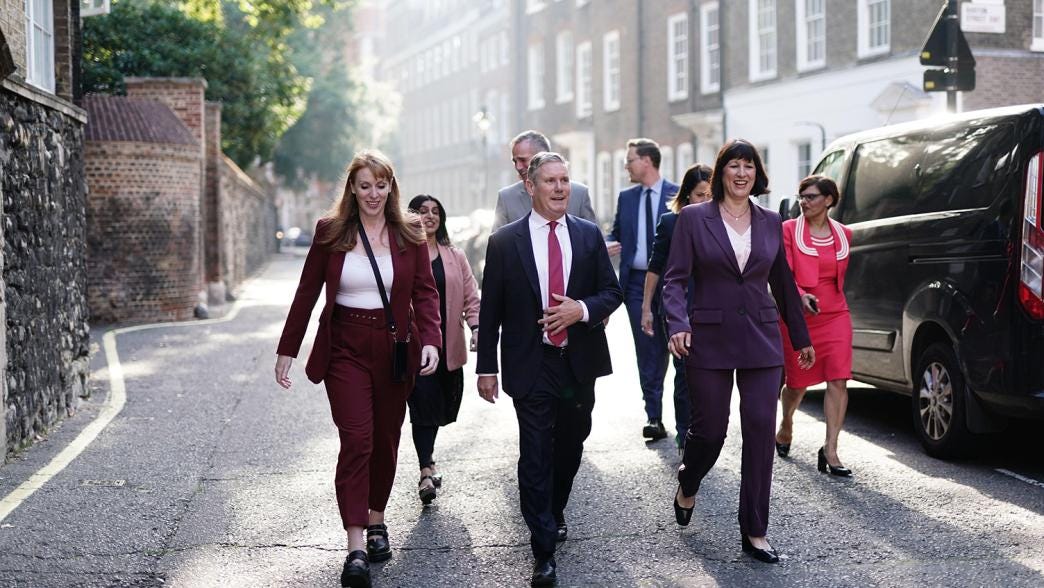
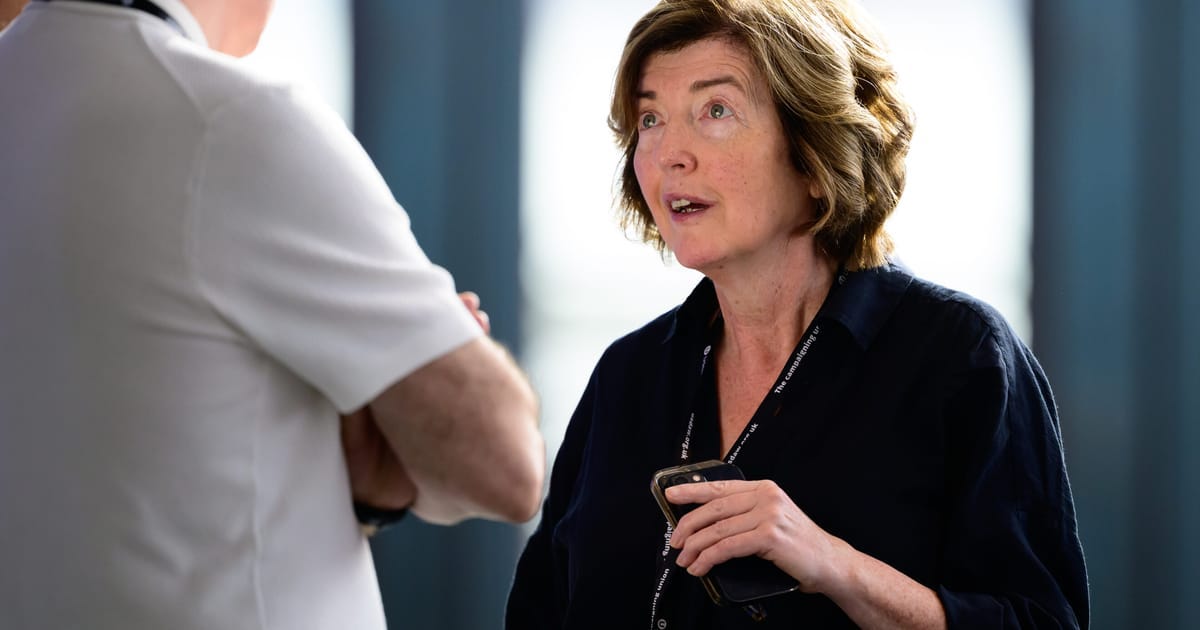
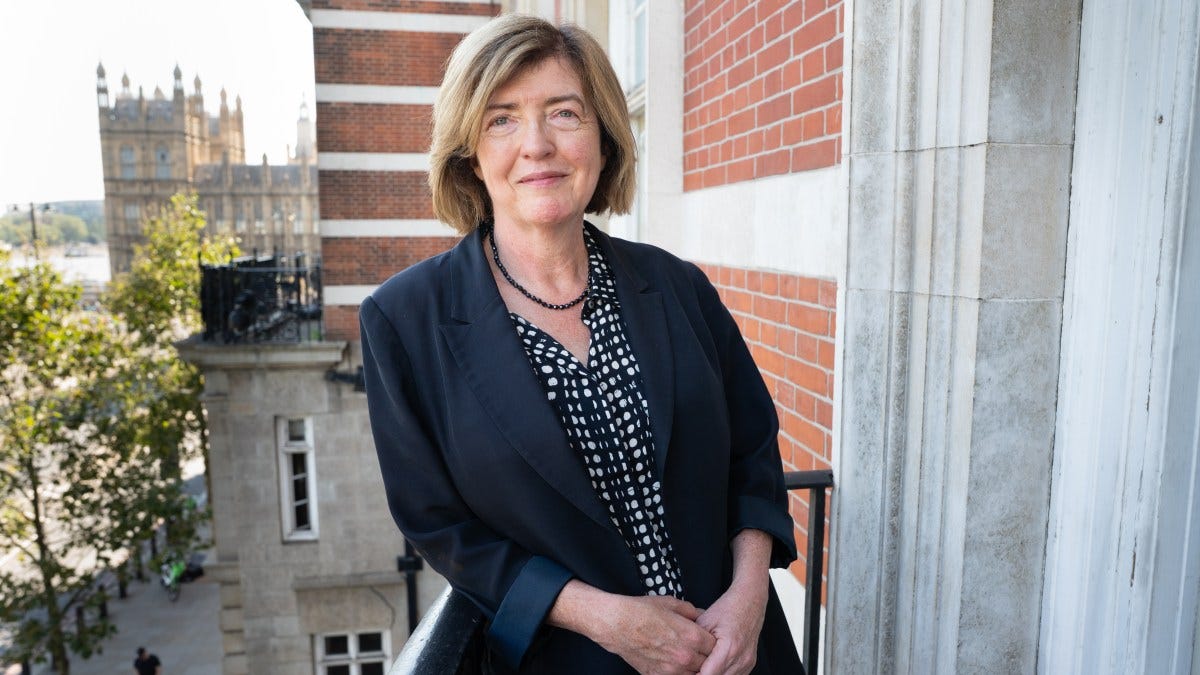

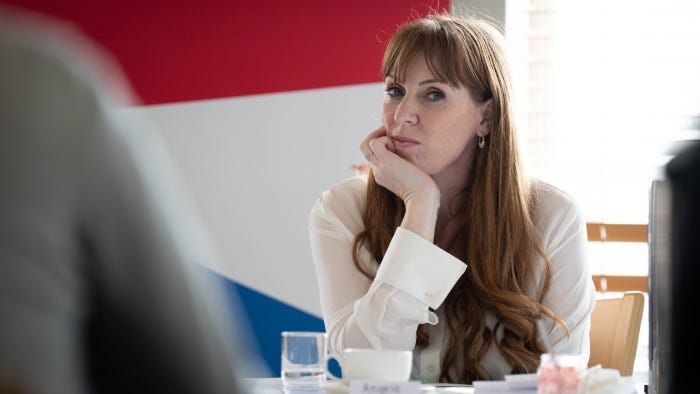
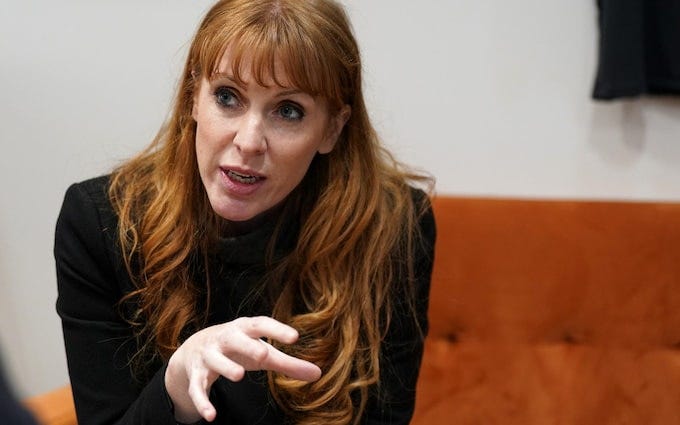
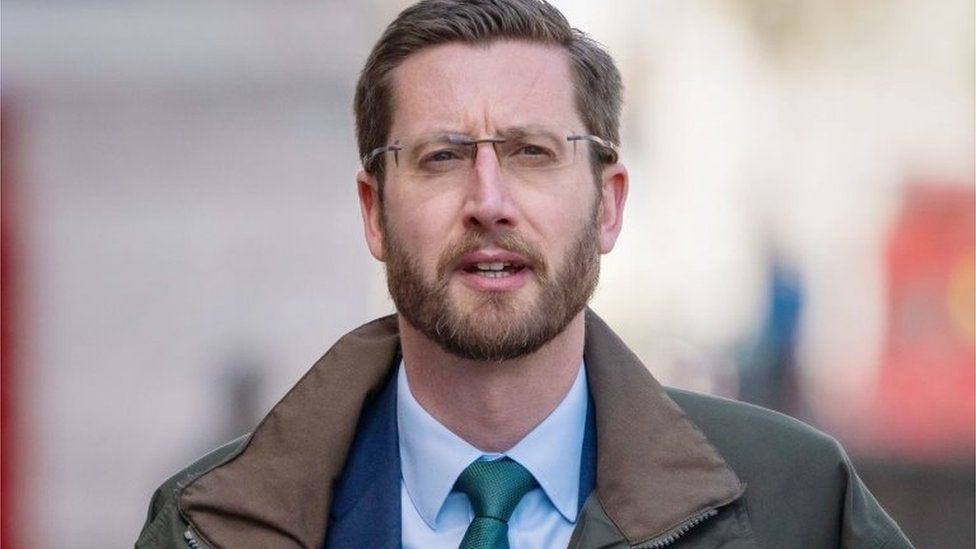
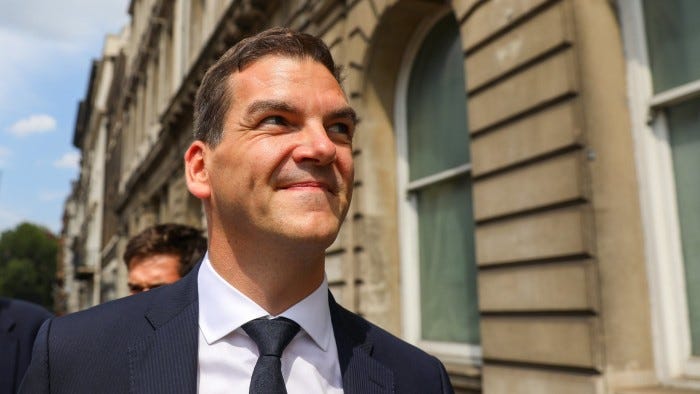
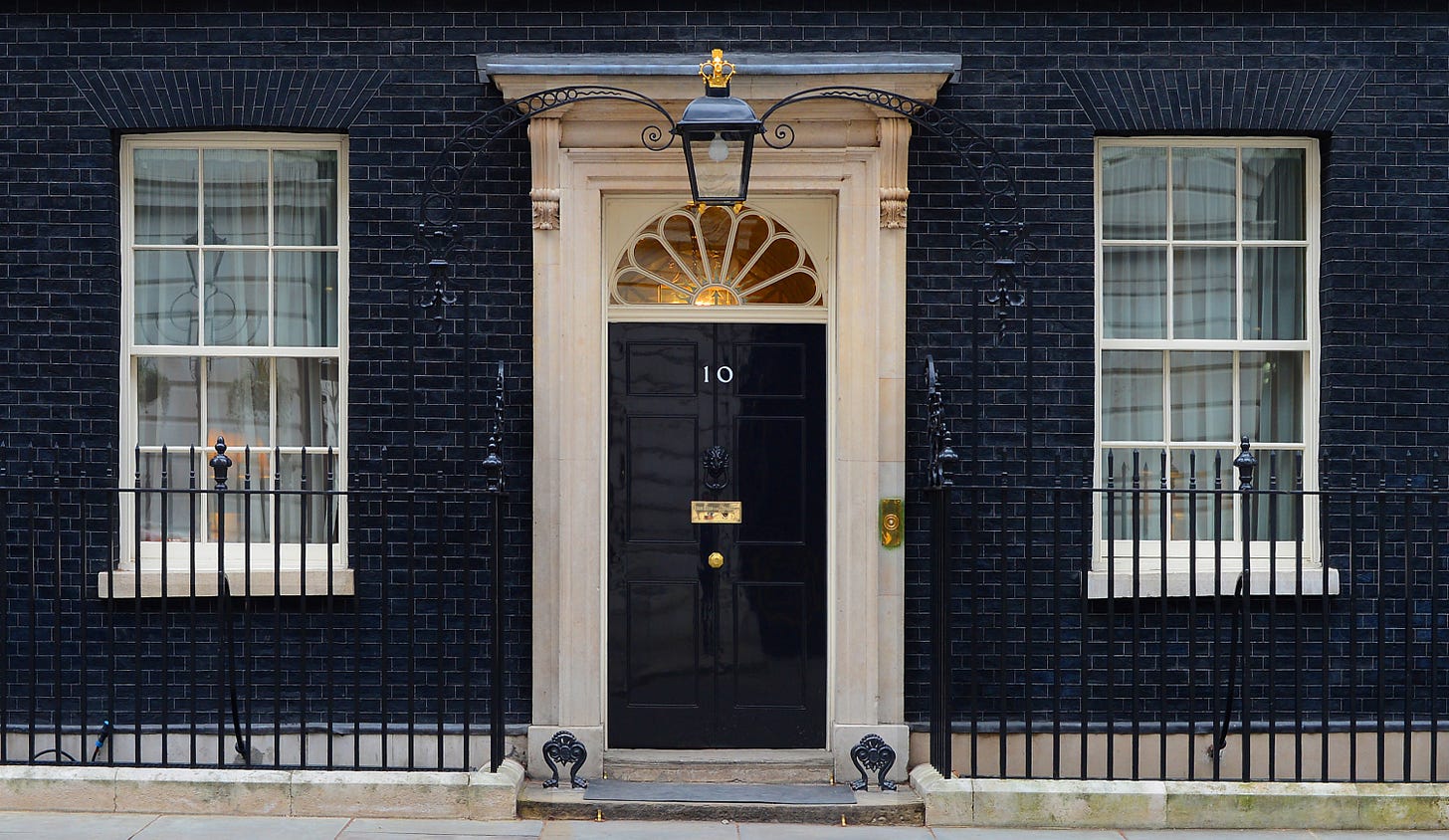
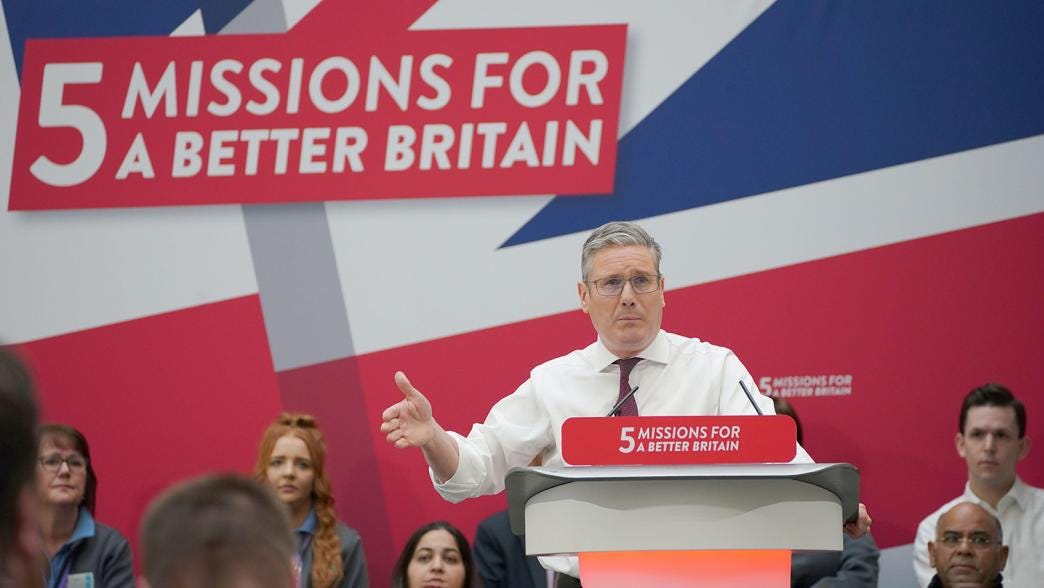
Thank you - fascinating as always
Given his gvt will inherit huge problems and no money, what can he do? Introduce integrity, decency and rule of law back into politics, hold rich and powerful to account, defend the realm, secure our borders, show compassion towards most vulnerable, clean up rivers and seas, fill in potholes, reduce power of SM companiez and leverson 2 might be start.